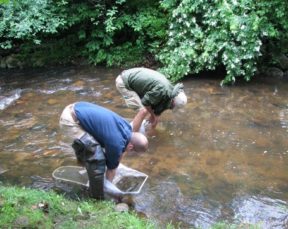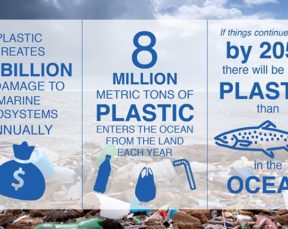

Drought takes its toll on California’s Lake Shasta. The lake serves as a major water supply for state residents (February 2014). Credit: Flickr.com/photos/torroid
The daily weather conditions we experience continue to be beyond our control. We seem unable to cause the weather at a particular moment to bend to our will. Sadly, the forces of weather generally have never responded to our “human” commands.
You may remember when, some years ago, scientists thought they could cause rain in a drought-stricken area of the West using airplanes to sew heavy, gray clouds with dry ice pellets. They tried several times, but it never worked.
Perhaps the best we humans can do is to study weather patterns after they occur, and then try to predict what is coming based on analysis of that past data. In that way, we may be able to “adapt” ourselves to weather challenges in a timely manner. For example, if we know of excessive rain in one place, past experience with those conditions may suggest a flood is coming. Even though we are unable to stop the flood in its tracks, an alert such as this allows us to get out of the way, save lives, and prevent some property damage.
Who Looks For Our Weather Data?
For many decades, professionally trained observers worked onsite at airports across the country taking hourly weather measurements. But, beginning in the 1990’s, most U.S. weather stations began converting to automated electronic observation systems. Once it was understood how difficult and expensive it was to automate the measurement of precipitation over the full range of year-round weather conditions, meteorologists began relying more and more on a nationwide network of volunteer weather observers to report local data on snow, sleet, freezing rain, and hail. The thousands of citizen-scientist volunteers who now work together to make these daily precipitation measurements are part of the Community Collaborative Rain, Hail, and Snow network, or “CoCoRaHS” (cocorahs.org). The weather data they report becomes part of a national database maintained by the National Weather Service (NWS) at the National Oceanic and Atmospheric Administration’s National Climatic Data Center.
Does Weather Data Have A Life Of Its Own?
Precipitation data is remarkably variable. It really is possible for it to rain on one side of the street and not on the other. It really is possible for one county to experience drought while the next county over experiences flooding.


Flooded roadway through Great Swamp National Wildlife Refuge following heavy rains brought by Hurricane Irene (August 2011). Credit: USFWS
Every day there are questions related to rain, hail, and snow that must be addressed. Where and when did it fall? What form did it take? How much fell (depth)? How widespread was it (area)? How hard did it fall (intensity)? How long did it last (duration)? How often do such storms occur (frequency)? What is the most precipitation we could get (extremes)?
Answers to such questions are required not only for individual locations, but for larger areas — counties, states, or entire regions — as well. Assessments of how much precipitation has varied from place to place, or season to season, or year to year, must receive special attention. Once observations and assessments are made, all the current data needs to be compared with data from the recent past in order to come up with the long-term weather averages we all rely on. And, once that is done, the entire process must be repeated as new reports and updates arrive.
Besides timely measurements, predetermined communication capability is essential if collected data is to be fully useful. Today, radio, TV, and Internet communications are maintained continuously by folks who know how important it is to get messages to the public, especially when dangerous weather events are on the horizon. Thanks to the dependable, precise, and ongoing support of local citizen-scientists, the federal government and other weather authorities are able to better understand those events.
This is a great time to join the effort. Consider becoming a part of the CoCoRaHS network (see cocorahs.org). Become a NWS Cooperative Observer (see nws.noaa.gov/om/coop/), or a NWS SKYWARN severe-weather spotter (see nws.noaa.gov/skywarn/). Set up your own electronic home weather observer program. Join the fun! And remember, all the data you collect will be put to very good use now, and for many years to come.

